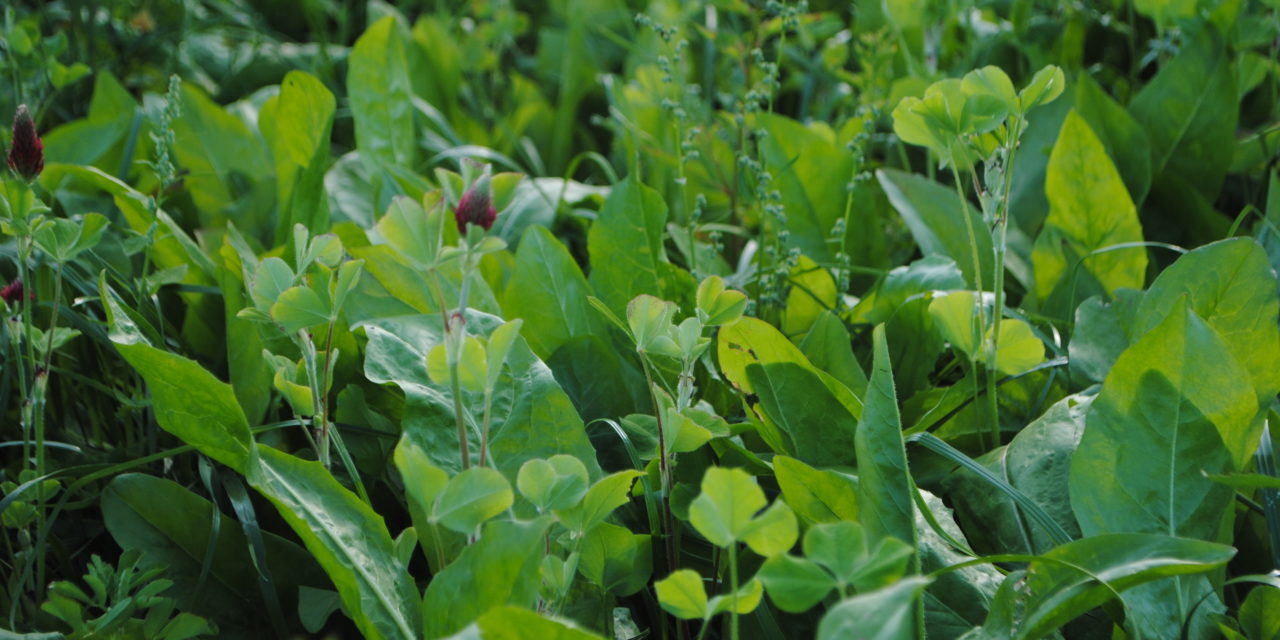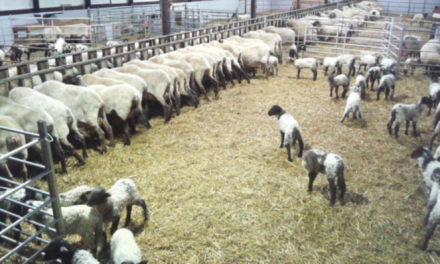This post is also available in:
![]()
![]()
![]()
![]()
![]()
Quality on temporary pastures for dairy sheep
Need/issue: Forage material is an integral component of a ruminant’s balanced diet and despite concentrates being increasingly replacing that, in recent decades, current economic drives lead to increasing again the importance of quality forage material in dairy sheep diets.
Introduction
It is well documented that Mediterranean pastoral areas produce inadequate and unevenly distributed over time, forage material to cover livestock’s requirements, therefore farmers try to compensate these through the use of temporary grasslands due to their high growth rates, high feed quality and flexible use.
Species cultivated
Traditionally, mixtures of annual forage legumes and winter cereals (oats, barley and triticale) or grasses (especially Italian ryegrass, Lolium multiflorum both italicum and westervoldicum subspecies) are cultivated, during the cool period, for short-term forage crops on arable lands. Legume species mostly used are common vetch (Vicia sativa), forage pea (Pisum sativum), woolly pod vetch (V. villosa ssp. dasycarpa), Persian clover (Trifolium resupinatum), crimson clover (T. incarnatum) and berseem clover (T. alexandrinum) (Lithourgidis et al., 2011). These temporary grasslands are either cut for hay or silage production or mowed after winter grazing (one or more grazing bouts per season). Recently, seed mixtures based on annual self-reseeding pasture legumes and winter cereals have been introduced to extend the duration of temporary grasslands to two or three years (Salis et al., 2012).
Among perennial forage species, lucerne (Medicago sativa) represents the primary temporary forage species for neutral and alkaline soils in the Mediterranean. Often, this species is cultivated in pure stands under intensive management (irrigation and fertilizers) for the production of hay, silage or dehydrated forage, providing 6-8 cuts between April and November. Under rainfed conditions or occasional irrigation, local ecotypes of lucerne stands typically persist for 3-4 years, offering 3-4 cuts between May and October before a rotational crop is grown. Despite their widespread natural distribution, perennial legumes such as red clover (Trifolium pratense) and birdsfoot trefoil (Lotus corniculatus), which are adapted to moderately acidic soils, are rarely sown. The same is true for sulla (Sulla coronaria) and sainfoin (Onobrychis spp.), although there is renewed interest in each of these perennial legumes (Re et al., 2014). A few varieties of perennial grasses, particularly cocksfoot (Dactylis glomerata), tall fescue (Festuca arundinacea) and bulbous canary grass (Phalaris aquatica), are sown in higher rainfall areas with deeper soils and are generally included in seed mixtures with annual or perennial legumes.
Forage nutritional quality characteristics
Round the year, availability of high-quality forage material is a critical determinant of the livestock dairy sheep sector’s success. Forage nutritional quality traits are often underrated and are not considered a market price determinant factor, like forage biomass (Collins & Fritz, 2003). However, the nutritional components in forage crops are key determinants of livestock growth, reproduction, behaviour, productivity and end-product quality (milk, meat etc). A high proportion of lignin, undigested fiber fractions, and other anti-nutritional factors (such as cyanogenic glucosides, alkaloids, condensed tannins etc) adversely affect the nutritional quality of forage crops. The quality forage should have contents of high organic matter digestibility, high non-structural carbohydrates, high crude protein, moderate tannins, high palatability, high essential amino acid, adequate minerals and low anti-nutritional factors (Collins & Fritz, 2003).
Several factors can affect, both directly and indirectly, these nutritional quality traits of forage crop material. Among these are the species and cultivar (e.g. legumes are more digestible than cereals, while temperate cultivars grow more digestible than tropical); soil factors (e.g. pH, available nutrients, texture, organic matter content and soil-water relationships, total N accumulation and N partitioning (Devries et al., 1989)); weather and climatic factors (e.g. range of air and soil temperature, amount of rainfall and light intensity); fertilizer applications and cultivation practices; (Fraser et al., 2001). Other factors, such as maturity at harvest, postharvest handling and storage, anti-nutritive components, residues of chemical fertilizers and pesticides, constitute also some very important and remarkable factors, affecting quality traits like the protein concentration in stems, leaves and seeds of plants, respectively (Leghari et al., 2016).
Agronomical practices towards quality forages
Agronomical practices such as timely sowing, tillage operations, diverse cropping system (intercropping and mixed-cropping), fertilizer and micronutrient application and irrigation management appear the most feasible approaches to improve forage yield and quality traits (Baxevanos et al., 2017). For example, intercropping of bitter vetch (Lathyrus linifolius), vetch (Vicia sativa), berseem clover (T. alexandrinum) and common bean (Phaseolus vulgaris) with forage maize (Zea mays) had improved Dry Matter Yield (DMY) (4%–52%) and Crude Protein (CP) content (20%–42%) when compared with sole maize crop (Javanmard et al., 2009). Moreover, intercropping of sorghum with legumes such as mungbean (Vigna radiata), cowpea (V. unguiculata) and cluster bean (Cyamopsis tetragonoloba) had improved the protein content by 8%–10% and reduced fibre content by 3%–5% compared to sole sorghum (Iqbal et al., 2019). Similarly, seed priming and foliar application with micronutrients-Zn and Fe (in both nano and chemical forms) in forage maize and cowpea had increased total dry matter yield, CP, soluble carbohydrates and P uptake than control, while Fe, Zn and Mn foliar application also positively affected the yield and quality of forage sorghum (Sharifi et al., 2016). Forage crops with low in vivo DMD and high NDF result in feeding restriction in animals, due to rumen fill effect, therefore low metabolizable energy (ME, MJ ME/kg DM) consumption compared with those with high in vivo DMD and low NDF values (Smit et al., 2005). Therefore, since a double fold increase in energy content between low feeding value forages and high ones can be observed after proper crop management, this could allow the sustaining of high milk production through a diet highly based on forages (Kingston et al., 2013).
Topic: nutrition
Production: Dairy
Animal Category: Adult / Lamb / Replacement







